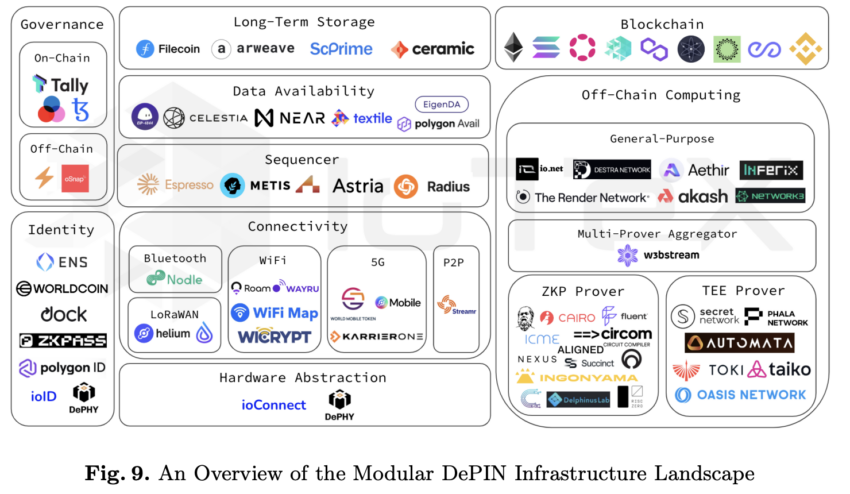IoTeX recently introduced a transformative approach to decentralized physical infrastructure networks (DePins), known as the Modular DePin Infrastructure.
This innovation aims to redefine the creation and functionality of Web3 technologies. Compared to traditional infrastructures, it offers a more efficient and cost-effective model.
How modular DePin infrastructure solves startups’ pain point
The strong increase in the number of DePin startups underlines a growing interest in this technology. However, many face obstacles such as limited funding and technical challenges, slowing their progress. To combat these issues, Modular DePin Infrastructure proposes a flexible, community-driven framework.
In a social media post, IoTeX outlined three key benefits of this modular infrastructure: it is cost-effective, enables the community to create more value, and improves collaboration. These ready-to-use modules solve technical problems and also enable faster and cheaper product launches. By decentralizing each module, the community retains greater value, strengthening the overall DePin ecosystem.
“It is! Modular DePin infrastructure is not only efficient; it is a catalyst for community empowerment and collaborative success,” said Render Network, supporting IoTeX’s views.
Read more: What is DePIN (Decentralized Physical Infrastructure Networks)?
This infrastructure makes it possible to put together customized applications via various modules. These include hardware abstraction, connectivity, sequencer, data availability, long-term storage, off-chain computing, blockchain, identity and governance. Developers can select and combine these modules based on the specific needs of their project, delivering unparalleled adaptability.
One of the main advantages of this system is community ownership. Different teams develop and maintain each module, promoting a collective ownership model. This setup creates a marketplace where developers can choose optimal modules for their applications, driving a module-specific economy.
Furthermore, the flexibility of the modular system supports the development of a wide range of DePin applications. These include sensor networks that monetize physical data, connectivity networks that use various wireless technologies to generate bandwidth monetization, and computer networks that provide decentralized computing resources.
Applications of the modular DePin infrastructure
Major DePin projects such as DIMO, Hivemapper (HONEY) and WeatherXM in sensor networks, as well as Helium, Nodle (NODL) and Wicrypt (WNT) in connectivity networks, are examples of the successful application of this modular infrastructure. Furthermore, computing resources are efficiently monetized through platforms such as Render Network (RNDR) and Akash Network (AKT), demonstrating the broad utility of the modular approach.
The connectivity module specifically investigates wireless communication techniques to improve connections within Web3 networks. Technologies such as Bluetooth, LoRaWAN, WiFi and 5G have been integrated into various projects, expanding the capabilities of these networks.
Read more: Render Token (RNDR): A Guide to What It Is and How It Works

Overview of the modular DePin infrastructure. Source: IoTeX Research
Additionally, the sequencer and data availability modules have been adapted from existing solutions to better suit DePin applications. Long-term storage solutions such as Filecoin (FIL) and Arweave (AR) play a crucial role in meeting the storage needs of these applications. While blockchain platforms such as Ethereum (ETH), IoTeX and Solana (SOL) provide essential infrastructure for development.











